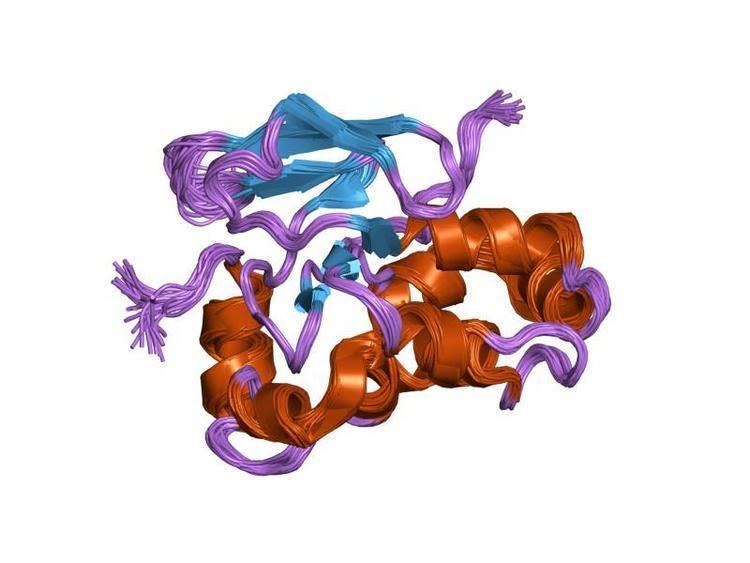Symbol Fasciclin InterPro IPR000782 SUPERFAMILY 1o70 | Pfam PF02469 SCOP 1o70 Pfam structures | |
 | ||
In molecular biology, the fasciclin domain (FAS1 domain) is an extracellular domain of about 140 amino acid residues. It has been suggested that the FAS1 domain represents an ancient cell adhesion domain common to plants and animals; related FAS1 domains are also found in bacteria.
The crystal structure of FAS1 domains 3 and 4 of fasciclin I from Drosophila melanogaster (Fruit fly) has been determined, revealing a novel domain fold consisting of a seven-stranded beta wedge and at least five alpha helices; two well-ordered N-acetylglucosamine groups attached to a conserved asparagine are located in the interface region between the two FAS1 domains. Fasciclin I is an insect neural cell adhesion molecule involved in axonal guidance that is attached to the membrane by a GPI-anchored protein.
FAS1 domains are present in many secreted and membrane-anchored proteins. These proteins are usually GPI anchored and consist of: (i) a single FAS1 domain, (ii) a tandem array of FAS1 domains, or (iii) FAS1 domain(s) interspersed with other domains.
Proteins known to contain a FAS1 domain include:
The FAS1 domains of both human periostin and BIgH3 proteins were found to contain vitamin K-dependent gamma-carboxyglutamate residues. Gamma-carboxyglutamate residues are more commonly associated with GLA domains, where they occur through post-translational modification catalysed by the vitamin K-dependent enzyme gamma-glutamylcarboxylase.
